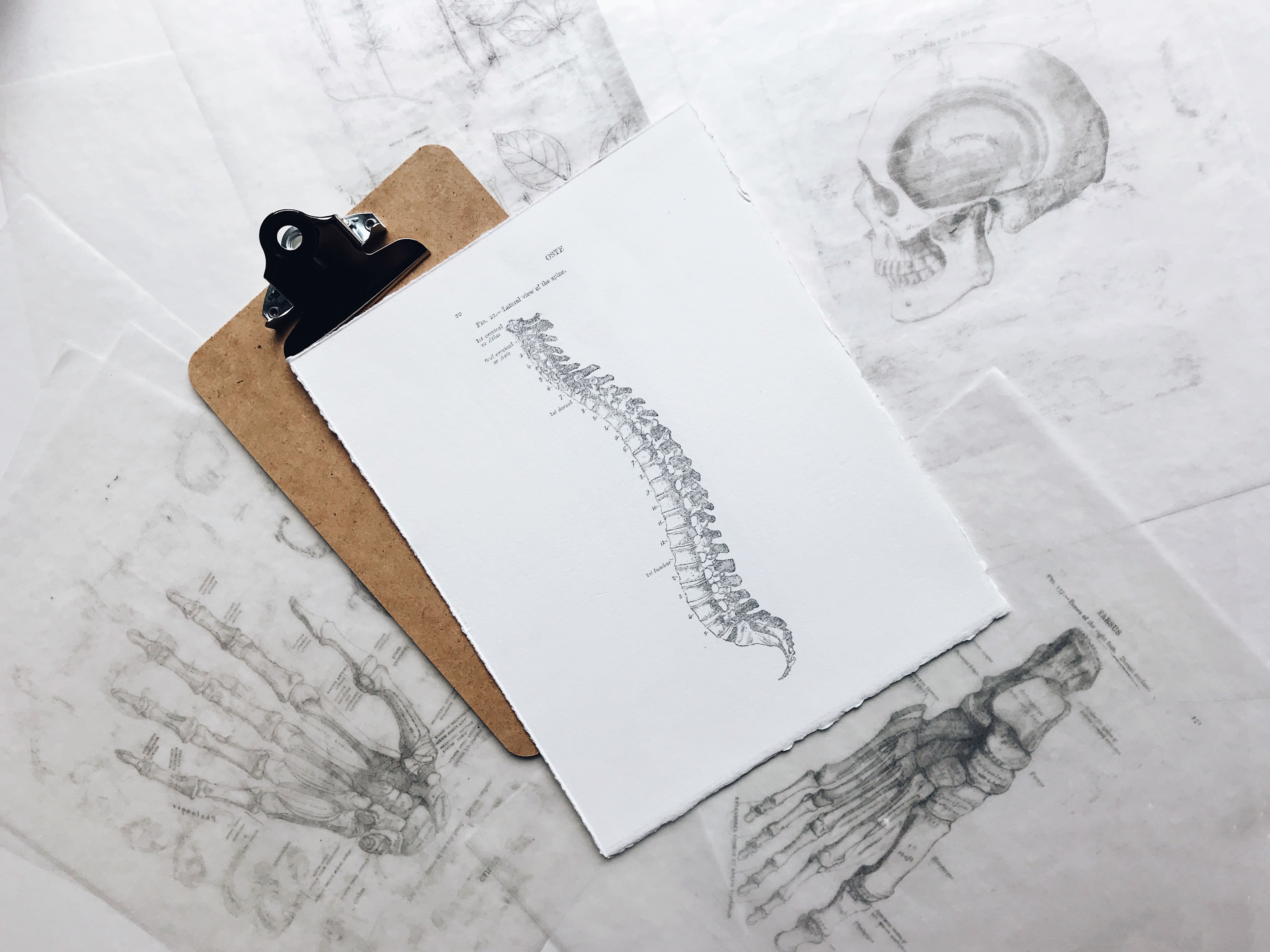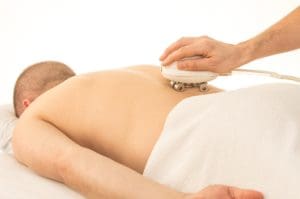Ah, the age old question: are crunches bad for your back?
I firmly believe there is no such thing as a ‘bad’ exercise.
While some exercises may not be a good fit for someone (at a particular moment in time), that doesn’t make them bad.
In fact, an exercise that doesn’t suit you may be perfect for someone else.
For example, if someone with low back pain is entering a gym for the first time, deadlifting is probably not a great idea.
But someone who has been training a while, moves well, and wants to improve lower body strength?
Deadlift like your life depends on it.
It all comes down to context.
In this manner, exercises can be viewed as a tool. They have application in some scenarios, but not all.
I mean, you wouldn’t call a hammer ‘bad’ because it cant cut a piece of wood, right?
Its just not useful in that scenario.
But for hammering nails? That boy is king.
However, one exercises that always seems to fall into the ‘bad’ category are crunches.
Hell, I have even heard people in the health industry say that crunches are a one way street down ‘back pain lane’ (OK, so made that up — but I thought it had a nice ring to it).
But is this the case? Are crunches bad for your back?
Are Crunches Bad For Your Back?

For the longest time, the abdominal crunch was a staple in nearly every fitness program on the planet.
But then things started to change.
Some interesting research came out suggesting that your spine only has the ability to handle finite number of ‘crunches’.
And once this number was exceeded?
Disc injury (and even disc herniation) ensued.
This research was enough to drive thousands of fitness professionals off crunches for life.
But, like most things in the health and fitness industry, there is more to this story.
This research was not performed using human subjects. It was performed on the spines of dead pigs.
As strange as this sounds, I should note that if you look closely, pig spines are eerily similar to yours and mine.
That’s not actually the issue here.
The issue is that they were dead.
The Walking Dead (Spines)
See, living human tissue has the capacity to adapt to load. This means that when a stress is applied, it becomes stronger, and better able to tolerate that stress.
It is this process that highlights how you become stronger after strength training, or fitter after running.
But obviously dead tissue does not have this same capacity.
The other thing that needs to be stated here is that in the research mentioned above, disc herniation typically occurred after thousands of crunches.
Now, I don’t know about you, but this is not how I exercise.
I go in, do a few sets of 6-10 (maybe 12 if I am feeling a bit frisky), then take a couple of days to recover before doing it all again.
In short, I place a moderate amount of stress on my body, and then give it time to adapt.
I don’t do thousands of reps and wait for my body to explode.
So Crunches Aren’t Bad for My Back?

Whoa, hold up just a minute!
I didn’t say that (well not completely anyway).
What I can say is that I don’t know of any research showing that crunches cause back pain in healthy, living, humans.
In my mind, damage might occur when the load placed on the spine exceeds its ability to adapt. Which is something that is going to change on an individual basis, and is likely dictated by several different factors. Such as:
- Genetics
- How fast the load is increased during training
- Age
- Health status
In fact, one could even argue that, because our spinal discs can adapt to load, crunches may actually have a positive effect on spine health. Of course, this would only occur if the exercise is performed in a safe and progressive manner.
And again, this is speculation on my part. As far as I know, there is no research demonstrating that crunches do improve spine health either.
Should I Do Crunches?
While I would argue that crunches have been unfairly demonized by the health industry, I certainly do not think that that they are a good fit for everyone.
As I alluded to earlier, it all comes down to context.
The General Gym Goer

Every single day you flex your spine in some way, shape, or form.
It could be to tie your shoelaces, pick up your child, or simply get into the car.
It is something you need to do.
With this in mind, I would argue that you need to train the ability to flex your spine under load in some capacity (note the word ‘some’ here). This will increase strength in these positions, making you more resilient in the process.
Therefore crunches may offer a way to help you better control and stabilize your spine.
I suspect you will also reduce your risk of an innocuous lower back injury occurring.
The Athlete

So what about more athletic populations? If you play a sport, should you do crunches?
And the answer would be a bid old maybe…
Spinal flexion strength and power is important for many sports. I mean, think about wrestling, track and field, tennis, martial arts, baseball, cricket, golf, and literally any team sport, and it becomes apparent that you need to move your spine explosively to perform well.
Don’t believe me?
Try and throw a tennis ball without moving your trunk at all and see how far it goes.
Then do the same thing with trunk movement.
Trust me when I say it will go a lot further…
With this in mind, to optimize performance exercises that work the muscles of the trunk in a manner that replicates these movements is integral.
And some variations of the crunch may fit the bill here.
But I Have Low Back Pain

Now, this is a group of people that I would very much encourage to avoid crunches.
Or at least for the time being, anyway.
While crunches may not directly cause lower back pain, I honestly believe that they can exacerbate it.
When someone presents with low back pain, I do believe that it can be the result of muscular weakness. In short, the muscles of the trunk (and often hips) are not strong enough job to stabilize the spine. This results in all the muscles of the lower back tightening up to splint the spine.
This tightness then leads to a heightened pain response.
Although this will not be true for everyone, it is something that I have seen enough in enough people to know that it is a common occurrence
And this is where crunches become a bad idea. Because they take the spine through a large range of motion, they can ‘turn up’ this splinting response. This can increase sensations of pain and tightness, rendering the exercise useless.
This does not mean that these guys should avoid crunch-type exercises for ever. But they should avoid them until they have developed enough abdominal strength using spinal stability exercises first.
After which,they should be able to tolerate them safely.
My Go to Abdominal Stability Exercises
Before prescribing any dynamic trunk ‘movement’ type exercises (AKA crunches), I like to make sure that the person has a good amount of trunk stability. I like to think of this as ‘protective strength,’ which ensures that you are able to tolerate more demanding exercises safely.
And here are my favorites:
1. RKC Plank
The RKC plank is a great variation that forces a lot more abdominal engagement that a traditional plank. It also teaches you how to actively stabilize your spine, and even recruits the glutes for good measure.
In short, it is a great bang-for-your buck exercise.
I like 3 sets of 15-30 seconds is more than enough with these guys.
2. Pallof Press
If you have ever trained at iNform, then you have probably done one of these bad boy — and for very good reason too.
The pallof press teaches you how to stabilize your spine against rotation. This makes it an extremely effective abdominal exercises that is a must do for improving core strength.
3 sets of 12-15 per side is good here.
3. Bird Dog Row
And third on the list, we have the bird dog row.
Despite its rather ridiculous name, this great exercises trains your abdominal muscles to resists extension and rotation. It is one of the most effective trunk stability exercises on the planet.
3 sets of 8-10 per side is ideal with these.
My Go to Dynamic Abdominal Exercises
Alrighty then — now lets imagine you have spent 8-12 weeks hammering the exercises above.
You have developed a strong and resilient set of abdominals that can resist force coming from any direction. You have no back pain, and feel comfortable transitioning into movements that involves spinal flexion.
Then you might want to give these guys a bit of a go.
I should also note that while these are not the same as traditional ‘crunches’ they are crunch variations. These are my personal preference when it comes to improving dynamic trunk strength in a safe and effective manner.
So, without further ado:
1. Reverse Crunch
As its name suggests, this exercise is almost like a backwards crunch that has you moving your legs rather than your torso.
The reason I really like this variation is as you are moving your legs, it is really hard to move too much through your lower back. This makes it a much safer alternative (in my opinion).
I like 2 sets of 8-10 slow and controlled reps here.
2. McGill Curl Up
Earlier on in this article I mentioned that the reason crunches fell out of vogue was because of some interesting research on pig spines. What I failed to mention that this research was performed by a very highly regarded therapist by the name of Stuart McGill.
And while I may be a little bit critical of some of his research, I truly believe that when it comes to back health, he is the dude.
This is a little exercises that he came up with that teaches you how to stabilize your lower back while creating movement through your thoracic (upper) spine. As a result, it is a great crunching option for practically everyone because it is safe and effective.
2 sets of 15-20 reps here please.
3. Myotatic Crunches
Last but not least we have the myostatic crunch.
While I have no idea where this exercise actually comes from, I happened to stumble across it in a book titled ‘The 4 Hour Body’ by Tim Ferris (which, despite its name, took me a lot longer than 4 hours to read…).
The reason I am such a big fan of this exercise is because it takes that spine through a good range of motion without being excessive. It also requires you to pause at the start of the movement and the top of the movement every single rep.
This makes it an excellent way to increases your abdominal strength while also improving your ability to stabilize your spine in challenging positions.
2-3 sets of 10 reps (with a 1 second pause at the top and bottom of the moment) is going to be more than enough with these bad boys.
Crunch Technique: Some Important Notes
While I believe that the exercises listed in this article are a great place to start, I also appreciate that after a while you might want a change.
You might even want to give some more traditional crunches a go.
And really, why the hell not.
But, before you dive on in, I thought I should give you some tips to make sure your are doing them in the best possible way:
- Keep it slow: Make sure the movement is slow and and controlled. This means taking a full second to get into the top position, and a full second to return to the bottom second. This will stop the movement from becoming ‘jerky’.
- Maintain good neck position: I see way too many people performing crunches by initiating the movement by ripping their head forward. This is bad. Instead, try and keep your chin tucked (make a double chin) so that your neck is in line with your spine.
- Focus on using your abdominal muscles: This tip probably sounds a bit silly, but it still needs to be said. You want your abdominal muscles initiating the movement, so actively focus on contacting them as hard as possible. If you feel like you are using your arms or head to start the movement, then you are doing it wrong.
- Use a slightly limited range of motion: Try and keep the range a little bit short. This means finishing the movement when your shoulders and upper back just leave the ground, rather than going all the way up until your chest touches your knees. This shorter range of motion makes it easier to focus on the abdominals.
And there you have it — a solid plan on how I would start integrating crunches safely.
Take Home Message
There is no such thing as a bad exercises — and yes, that even includes crunches.
In fact, when used appropriately they may even make your lower back more resilient, and improve sport performance.
Just make sure you are strong enough to perform them in the first place (and when you do perform them, you do so properly).
Would you like to re-assess your health behaviours and identify what you need to work toward over the coming year?
Our scorecard is a quick and simple questionnaire to help you do this.
Take The Scorecard Here
It’s free and only takes 7 minutes
Photo by Jonathan Borba from Pexels














0 Comments